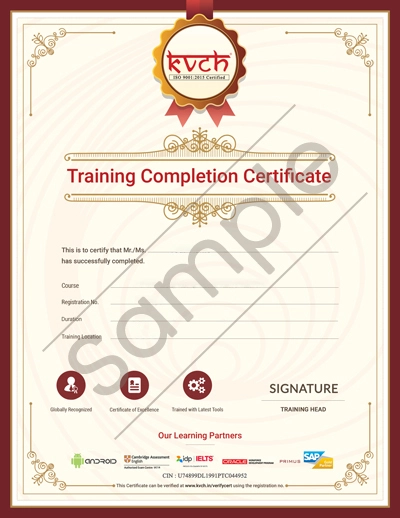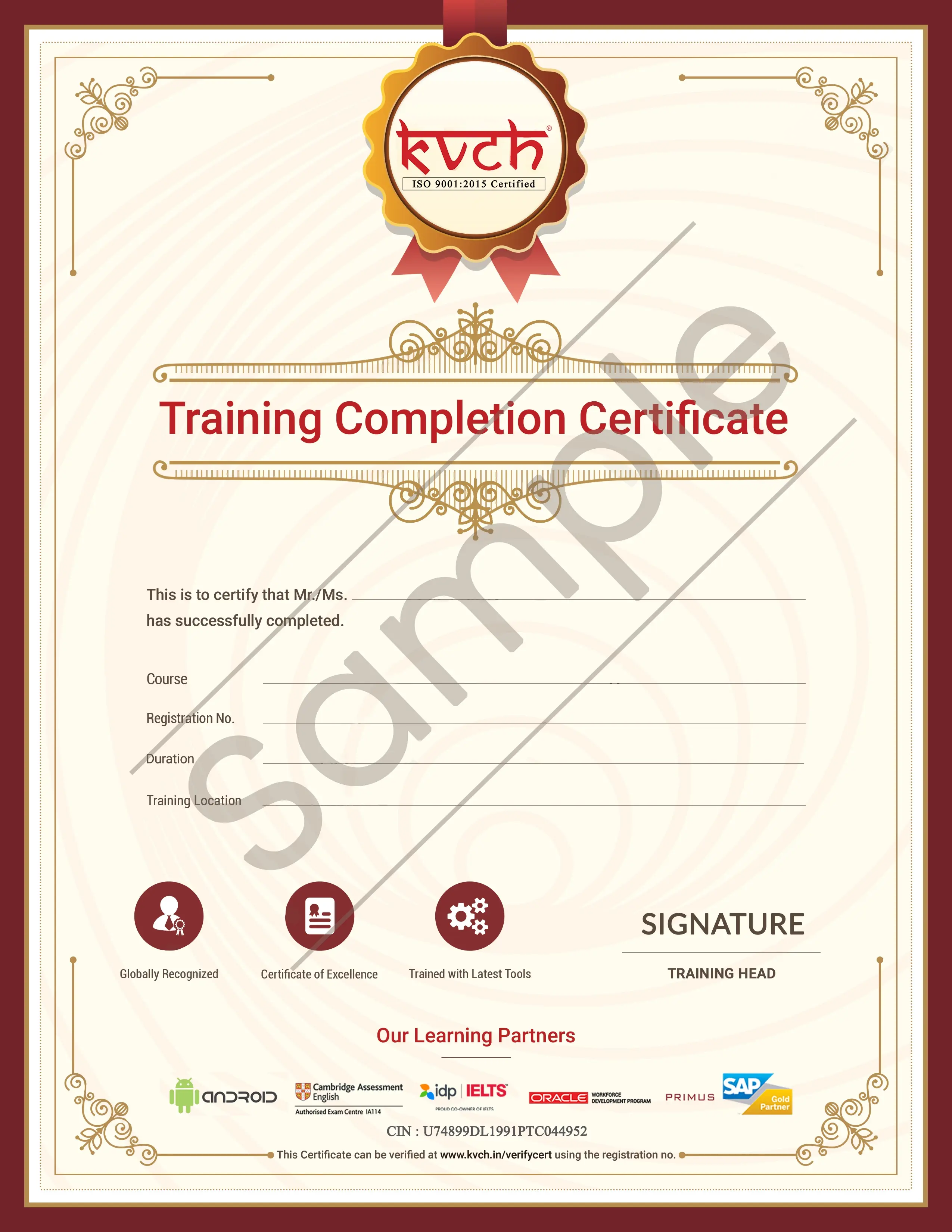Python Full Stack With ReactJS Overview
The Python Full Stack Development Course offers a comprehensive journey into web development, focusing on both front-end and back-end technologies. Students start by learning Python, a versatile and powerful programming language, before diving into key web development frameworks like Django or Flask for the back end. On the front end, the course covers HTML, CSS, JavaScript, and modern libraries such as React or Angular.
The course emphasizes building robust, scalable web applications, integrating databases like MySQL or MongoDB, and following best practices in software development, including version control with Git. By the end, participants will be equipped with the skills to design, develop, and deploy full-fledged web applications, making them valuable assets in the tech industry.
In addition to mastering core technologies, the Python Full Stack Development course also focuses on developing critical problem-solving and debugging skills. Students will engage in hands-on projects and real-world scenarios, applying their knowledge to create dynamic, responsive web applications. The course often includes modules on RESTful API development, allowing students to create efficient and scalable interfaces for communication between the front-end and back-end systems.
This course covers essential topics like cloud deployment techniques, security best practices, and performance optimization, ensuring you're ready to tackle the challenges of modern web applications. Whether you’re just starting out or looking to build on your current skills, you’ll gain a strong foundation in full stack development with Python. This knowledge will prepare you for careers as a full stack developer, software engineer, or web developer.
In addition, the Python Full Stack Development course includes collaboration tools and agile methodologies to help you work effectively in teams. You’ll learn about version control systems like GitHub, which make collaboration and code management easier. The course also introduces DevOps practices such as Continuous Integration and Continuous Deployment (CI/CD), which help automate and improve the software development process.
As you progress through the course, you’ll dive into advanced topics like microservices architecture, containerization with Docker, and cloud platforms like AWS and Azure. These skills are vital for building scalable applications that can handle a lot of users. By the end of the program, you’ll have created a portfolio of projects showcasing your full stack skills, making you a strong candidate for jobs in full stack development, web application architecture, or cloud engineering.
Python Full Stack Curriculum
- Introduction HTML
- HTML Basics
- HTML Elements
- HTML5 Semantic
- HTML Attributes
- HTML Headings
- HTML Paragraph
- HTML Styles
- HTML Formatting
- HTML Computer Code
- HTML Comments & Colours
- HTML CSS, Links and Images
- HTML Lists
- HTML Blocks
- HTML Layout
- HTML Responsive
- HTML JavaScript
- HTML Head
- Introduction CSS3
- CSS3 Syntax
- CSS3 Colours
- CSS3 Backgrounds
- CSS3 Borders
- CSS Padding
- CSS Height/Width
- CSS3 Gradients
- CSS3 Shadows
- CSS3 Text
- CSS3 Fonts
- CSS3 2D Transforms
- CSS3 3D Transforms
- CSS Box Model
- CSS Display
- CSS Position
- CSS Align
- CSS Pseudo-class
- CSS Pseudo-element
- CSS Navigation Bar
- CSS Dropdowns
- CSS3 Images
- CSS Attr Selectors
- CSS Forms
- CSS Counters
- CSS3 Animations
- CSS3 Buttons
- CSS3 Multiple Columns
- CSS3 Filters
- CSS3 Media Queries
- CSS3 Responsive
- Introduction to Bootstrap
- Bootstrap Basics
- Bootstrap Grids
- Bootstrap CSS
- Typography
- Tables
- Forms
- Buttons
- Corousel
- Modal
- Tooltip
- History of JavaScript
- Advantages
- Limitations
- Script element
- Creating your first JavaScript
- program
- Coding convention
- Setting up development environment (with VSCode)
Types and Statements
- Keywords in JavaScript
- Overview of Data types
- Primitive Data types
- Non-primitive Data types
- Conditional statements
- Loops
Operators
- Introduction to operators
- Operator precedence and associativity
- Deep dive into operators
- Arithmetic
- Comparison
- Ternary
- Logical
- Language
- Bitwise
Functions - Level I
- Introduction to functions
- Function definition
- Passing values
- Returning values
- Local and global variables
- Functions as objects
- Function constructor
Functions - Level II
- Function invocation patterns
- Arrow functions
- JavaScript scopes
- Function closures
Arrays and Strings
- Introduction to Arrays
- Array declaration
- Array access methods
- Multi-dimensional arrays
- String properties
- String access methods
Event handling
- JavaScript events
- Event handler
- Event flow
- Event bubbling and capturing
- Event types
Document Object Model (DOM)
- Introduction to DOM
- Types of DOM
- DOM standards and methods
- Manipulating documents using DOM
- Handling images
- Table manipulation
- Animation
- Node and Node-list handling
Form Handling
- Introduction to forms
- Form processing
- Forms object
- Accessing data from forms
- Form validation
- Additional features in forms
- Validation APIs
Debugging Techniques
- JavaScript Errors
- Error handling mechanisms
- Introduction to jQuery
- Query Syntax
- Query Selectors
- Query Events
- Query Effects
- Query HTML
- Query Traversing
- jQuery AJAX & Misc
- Introduction to React
- History of React
- Key Benefits of React
- React development environment
- Creating your first React Application
- React Source code structure
JSX
- Introduction to JSX
- Coding in JSX
- Expressions in JSX
- Working with HTML
- Conditional Constructs
Component
- Introduction to components
- Why Components?
- Writing JSX code in components
- Adding CSS
- Populating Data Dynamically Passing data through "props"
- Multiple Components
State and Event Binding
- Introduction to Events
- Event Handlers
- Working with state
- Data Binding
- Controlled and Uncontrolled
- Components
Rendering Lists and Conditional Contents
- Rendering lists of data
- Using stateful list
- Keys in data
- Conditional Contents
- Adding dynamic styles
Debugging Techniques
- Understanding error message
- Code flow and warnings
- Breakpoints
- Using React Dev Tools
HTTP
- Introduction to HTTP
- Methods in HTTP
- Response code in HTTP
- Introduction to REST interfaces
- Characteristics of REST
- Introduction to JSON
- JSON data representation
- GET request
- Using async and await
- Handling Http errors useEffectsO
- POST request
Custom React Hooks
- What are custom hooks?
- Creating and using custom hooks
- Custom HTTP hooks
Forms
- Introduction to Forms
- Working with user input submission
- Adding validation
- Working with custom hooks
Authentication
- What is authentication?
- Why and How?
- Authentication tokens
- Setting up
- Adding signup
- Showing feedback to the user
- Adding User login
- Using tokens
- Redirecting the user
- Adding logout
- Protecting frontend pages
- Persisting User authentication status
- Adding auto logout
Deployment
- Introduction
- Deployment steps
- Adding lazy loading
- Building the code for production
- Getting started with deployment
- Handling routes and finishing deployment
CRUD Operations Using MongoDB
- Installing MongoDB
- Connecting to MongoDB
- Schemas
- Models
- Saving a Document
- Querying Documents
- Comparison Query Operators
- Logical Query Operators
- Regular Expressions
- Updating Documents- Query First
- Updating a Document- Update First
- Removing Documents
Authentication and Authorization
- Introduction
- Creating the User Model
- Registering Users
- Authenticating Users
- Testing the Authentication
- JSON Web Tokens
- Generating Authentication Tokens
- Storing Secrets in Environment Variables
- Setting Response Headers
- Encapsulating Logic in Mongoose Models
- Authorization Middleware
- Protecting Routes
- Getting the Current User
- Logging Out Users
- Role Based Authorization
- Testing the Authorization
Handling and Logging Errors Deployment
- Introduction
- Preparing the App for Production
- Preparing the App for Deployment
- Adding the Code to a Git Repository
- Setting Environment Variables
- MongoDB in the Cloud
Python Overview
- Why do we need Python?
- Program structure
Environment Setup
- Python Installation
- Execution Types
- What is an interpreter?
- Interpreters vs Compilers
- Using the Python Interpreter
- Interactive Mode
- Running python files
- Working with Python shell
- Integrated Development Environments
- Interactive Mode Programming
- Script Mode Programming
Basic Concepts
- Basic Operators
- Types of Operator
- Python Arithmetic Operators
- Python Comparison Operators
- Python Assignment Operators
- Python Bitwise Operators
- Python Logical Operators
- Python Membership Operators (in, not in)
- Python Identity Operators (is, is not)
- Python Operators Precedence
- Data Types
- Variables
- Assigning Values to Variables
- Multiple Assignment
- Python Numbers
- Python Strings
- Accessing Values in Strings
- String Special Operators
- String Formatting Operator
- Triple Quotes
- Built-in String Operations
- Python Lists
- Accessing Values in Lists
- Updating Lists
- Delete List Elements
- Basic List Operations
- Indexing, Slicing, and Matrixes
- Built-in List Functions & Methods
- Python Tuples
- Accessing Values in Tuples
- Updating Tuples
- Delete Tuple Elements
- Basic Tuples Operations
- Indexing, Slicing, and Matrixes
- No Enclosing Delimiters
- Built-in Tuple Functions
- Python Dictionary
- Accessing Values in Dictionary
- Updating Dictionary
- Delete Dictionary Elements
- Properties of Dictionary Keys
- Built-in Dictionary Functions & Methods
Loops and Decision Making
- If statements
- ..else statements
- Nested if statements
- While loop
- For loop
- Nested loops
- Loop Control Statements
- Break statement
- Continue statement
- Pass statement
Functions
- Defining a Function
- Syntax
- Calling a Function
- Pass by reference vs value
- Function Arguments
- Required arguments
- Keyword arguments
- Default arguments
- Variable-length arguments
- The return Statement
- Scope of Variables
- Global vs. Local variables
Python Modules and Packages
- Framework vs Packages
- Folium Introduction
- Why are modules used?
- Creating modules
- The import Statement
- The from...import Statement
- The from...import * Statement
- Locating Modules
- The PYTHONPATH Variable
- Namespaces and Scoping
- The dir( ) Function
- The globals() and locals() Functions
- The reload() Function
- Packages in Python
Basic OOPs Concept
- Creating class in Python
- Documented String
- Private Identifier
- Constructor
- Inheritance
- Polymorphism
Decorator, Iterator and Generator
- Anonymous Function
- Lambda
- Map
- Filter
- Reduce
File Manipulation
- Opening Text File
- Working with a File on Python
- The open function
- File modes
- The file object attributes
- close() method
- write() method
- read() method
- Files: Input
- Files: Output
- Reading files
- Renaming & deleting files
- Writing into a file
- remove() method
Python GUI
- Basic Operations using Tkinter
- Buttons and Textbox
- Menu Bar
- Message Box and Radio Button
- Checkbox and Event Creating
- Creating Application in GUI
SQL and Python
- Overview of SQLite
- Integrating Python with SQLite
Advanced Concept – Overviews
- Networking Overview
- Sending and Receiving Email by Python
- Basics of Pandas and Numpy
- How to use Anaconda
- How to create dashboard
- Overview of Django
- Introduction to Django and Django Components
- Installing & Configuring Django Components Django
- Pre-Requisites Downloading & Installing Django Choosing a Database
- Creating a New Project
- The Basics: URL Confs, View functions, Shortcuts, Decorators,
- File Uploads: Overview, File objects, Storage API, Managing Files
- Class-based Reviews: Overview, Built-in display views, Built-in editing views,
- Using mixins, API references,
- Advanced: Generating CSV, Generating PDF
- Basics Overview
- Language overview, Built-in tags and filters
- Template API, Custom tags and filters
- Django Template Language
- Static and Media file
- Template merging using static and media files.
- Models: Introduction to models, Field, types, Meta options, Model class
- Query Sets: Making queries, Query Set method, Lookup expressions
- Model Instances: Instance methods, Accessing related objects
- Migration: Introduction to Migrations
- Advanced: Managers, Transactions, Aggregation, Search, Custom fields, Query Expressions, Conditional Expressions Database Functions
- The basics: Overview, Form API, Built-in fields, Built-in widgets
- Advanced: Forms for models, Integrating media, Form sets, Customizing validation
- Session and Cookies Management.
- Introduction of Session
- Type of Session storage
- Introduction of Cookies
- Admin site
- Admin actions
- Admin Customizations
- REST Framework Introduction
- Installation of REST Framework
- Web browsable API
- Creating and Consuming REST API
- Consuming and Sending JSON Data through REST
- Requests and Responses.
- Serialization, Model Serializer
- Access REST using POSTMAN, JavaScript, Console Application,
- Window Application
- Security in REST(BASIC, Session, Token Authentication)
- Introduction E-commerce Project
- Modules of E-Commerce (User, Admin, Customer, Account, Cart etc.)
- Integration of all modules
- Settings: Overview, Full list of Settings
- Cloud Deployment (Digital Ocean, Heroku, Python anywhere)










.webp)
.webp)
.webp)
.webp)
.webp)
.webp)
.webp)
.webp)
.webp)
.webp)
.webp)
.webp)
.webp)
.webp)
.webp)
.webp)
.webp)
.webp)
.webp)
.webp)
.webp)
.webp)






























